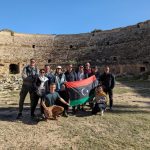Europe’s 2nd largest country of Ukraine is known for its stunning Orthodox churches, Carpathian mountains, and beautiful Black Sea Coastline. However, many people don’t realize that Ukraine is home to some of Europe’s best WW2 sights comparable to those in places like Germany, Northern France, and Belgium.
Modern Ukraine has been independent since 1991, but between then and 1922, the country was part of the USSR. In the summer of 1941, Nazi Germany initiated Operation Barbarossa which was aimed at conquering the Western territories of the Soviet Union. The ideological aim of the operation? Repopulate captured territory with ethnic Germans, the natives would be enslaved or murdered to make way.
On June 22nd, 1941, the Nazi onslaught engulfed the Soviet Socialist Republic of Ukraine. 4 million German soldiers and their Fascist allies stormed across the borders of the USSR in what would become the largest human invasion in history.
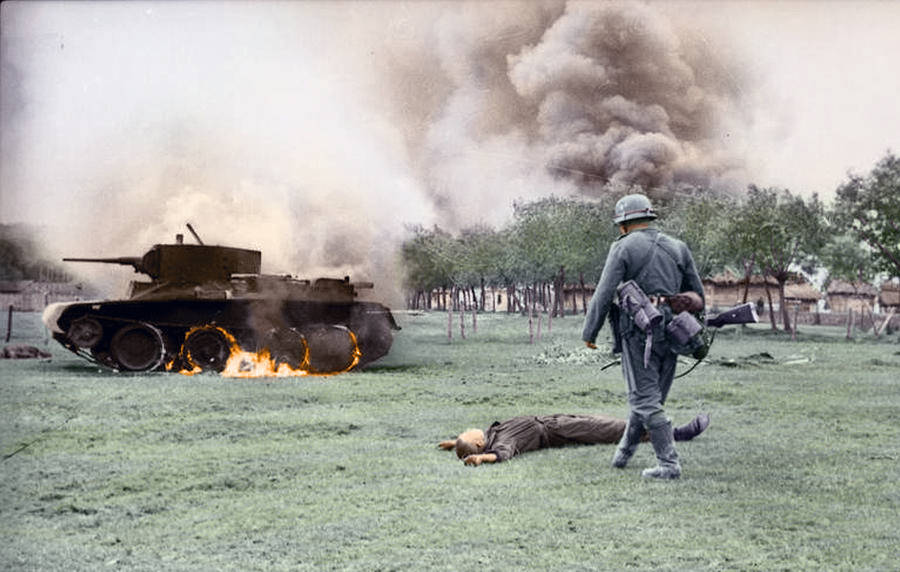
The invading German forces, superior to the Red Army in manpower, technology, and planning, rapidly overran the ill-prepared Soviet Forces. Despite the seemingly inevitable defeat, the Soviets fought monumental and bitter battles against the overwhelming forces of the Third Reich. However, numerous tactical failures led to the Soviets finally retreating back into the borders of Russia.
Thus, between 1941 and 1943, Nazi-occupied Ukraine became known as the Reichskommissariat Ukraine under which the Fascist administration was tasked with pacifying the region as well as exploiting the local population and resources for the benefit of Greater Germany.
The reign of the Reichskommissariat led to the death of millions inside Ukraine, a country that was at the time made up of various ethnic groups including Russians, Belarusians, Polish, Jews, Roma Gypsies, and Crimean Tatars. It’s believed that over 5 million Ukrainian civilians died due to conflict, ethnic cleansing, disease, and famine during WW2.
In 1943, as the tide had turned against Nazi Germany, the Soviets reentered Ukraine and fought a grueling campaign west, further decimating the heavily fought over territory. As a result of the two campaigns for the capture of the country, modern Ukraine is rich in WW2 sights and relics.
YPT has been running tours to Ukraine for the best part of a decade. Whether it’s Soviet sights or WW2 sights, we know all too well that the country can provide a wealth of locations for any military history buff’s dream Europe itinerary. In this article, we’re going to look at 5 epic WW2 locations across Ukraine.
7. Abandoned German Panzer Tank, Spadchansky
The speed of the German advance during Operation Barbarossa was unprecedented in warfare at the time. The Germans were often advancing up to 50 miles a day which led to many Soviet Units being cut off from the main bulk of the Red Army. As a result, many formed guerilla units behind enemy lines known as partisans. As well as blending in with the local population, Soviet partisans took advantage of the huge areas of dense forest across Ukraine to wage a ruthless irregular war against Fascist forces.
Deep in the Spadchansky forests of Ukraine, a few kilometers from the border of Russia, was the site of bitter fighting between Soviet partisans and Nazi troops during the German occupation of Ukraine. This dense forest was perfect for partisan hideouts and today is home to an epic relic of the partisan front of the Second World War and what should be a staple of European battlefield tours.
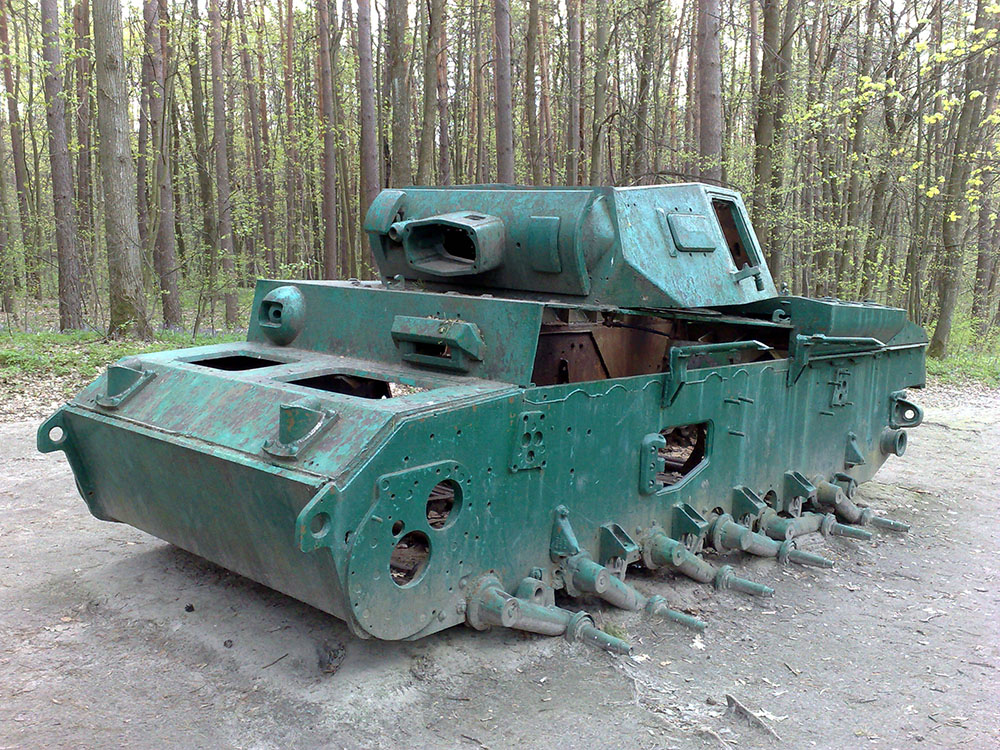
During December 1941, Soviet partisans took on over 3000 German soldiers backed by armored vehicles and artillery. During the ferocious battle, a Nazi panzer was knocked out deep in the woods and simply abandoned. Upon discovering this relic I was reminded of the final battle featured in the movie Defiance, where a similar German Panzer is dispatched to wipe out the retreating partisan fighters in the forests of Belarus.
This relic of Third Reich military engineering, a Panzerkampfwagen III Ausf. J to be precise still lies there to this day. Whilst anything of value has obviously been stripped, thankfully somebody has put a coat of rust-proof paint over the vehicle in order to preserve this incredible piece of WW2 history.
6. The Bunkers of Hitler, Himmler and Göring
There are few places in the world where you can visit multiple WW2 Sights relating to three of the Third Reich’s most powerful in one day, but in Ukraine, you can. Führerhauptquartier Werwolf was the Nazi High Command Eastern Front headquarters located deep in a pine forest about 12 kilometers north of the Ukrainian city of Vinnytsia, it was the most Eastern HQ ever used by Hitler in person.
Whilst in Ukraine, we headed to a bunker 50km away from the Werewolf complex, known as Hegewald, which was once owned by the feared head of the SS, Heinrich Himmler. It was here that Himmler developed his sinister plan for the East known as “Generalplan Ost”. Hegewald was to become the center of the Aryan expansion to the territory of Eastern Europe.
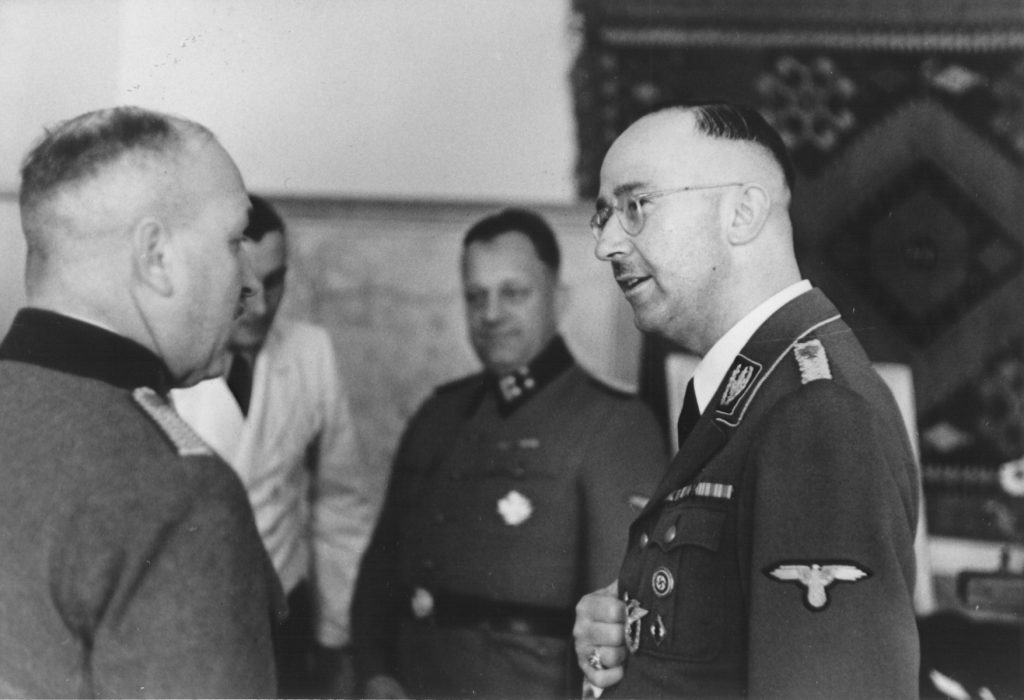
Hegewald was constructed in late 1941 on a former Soviet airfield that had been captured by the Germans. It was fully functioning by the summer of 1942 and consisted of a luxury sprawling villa for Himmler, military barracks, and an airfield. Over 100 high ranking SS officers were stationed at the base, which was protected by a crack force of 1,000 Waffen SS troops and naturally featured a direct line to the Führer himself.
Himmler was frequently based at the Hegewald complex, leading to attention from local partisans. One day, whilst out on a horse ride through the woods nearby, one of Himmler’s personal pilots was abducted by suspected partisans and never seen again. It’s guaranteed he faced a gruesome death. By late 1943, with Soviet forces edging closer, the headquarters was closed down. German forces sabotaged it before retreating west.
In the post-war years, the Soviets couldn’t destroy what was left of Hegewald and instead built a school up around it. In the post-Soviet years, the school was turned into apartments for local residents, one of whom keeps an eye out for any adventurous tourists looking for the bunker, which is still peppered with bullet holes from the war.
5. WW2 sights in the Odessa Catacombs
In the Black Sea port city of Odessa, also known as the mother city of the Russian Mafia, two monumental battles of the Eastern Front took place when the city was invaded by the Germans and their Fascist Romanian Allies and then recaptured by the Red Army.
Generally regarded as a tourist city for Ukrainians and foreigners alike, there is a far darker side to the city that few people see, but a guide is absolutely necessary to find it. So when we were there, we decided to check out the non-tourist side of the city on an underground tour of the Odessa catacombs.
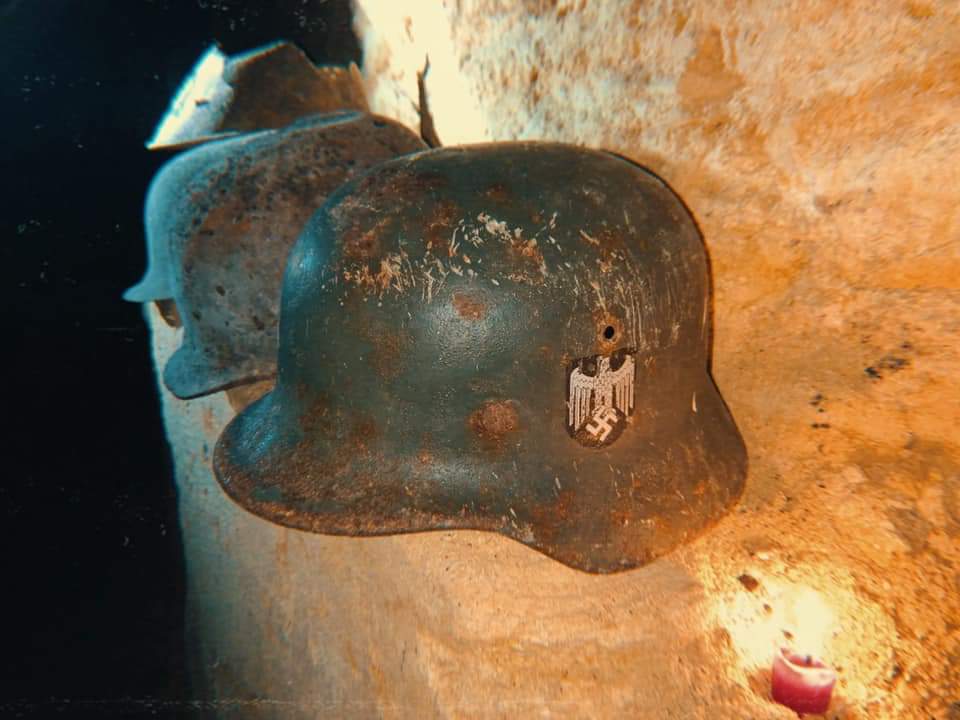
Stretching for an eye-watering 2,500km, The Odessa catacombs are made up of a seemingly endless labyrinth of cramped tunnels that spread out like tentacles across the city of Odessa and the wider region. The majority of the catacombs were formed from stone mining centuries ago, but after the bloody siege of Odessa in 1941, they soon began to provide a far different purpose. A large number of Soviet troops cut off from the bulk of the retreating Red Army escaped certain death by retreating into the catacombs. They became partisans and launched a guerilla war on the Fascist occupiers above ground.
4. The 411 Battery, Odessa
After becoming the battleground multiple times in WW2, Odessa naturally has as many WW2 relics above ground as it does below. Upon leaving the catacombs, we headed to the next stop: the 411 Coastal Battery Museum which now forms part of a large memorial complex and a public park on the outskirts of downtown Odessa.
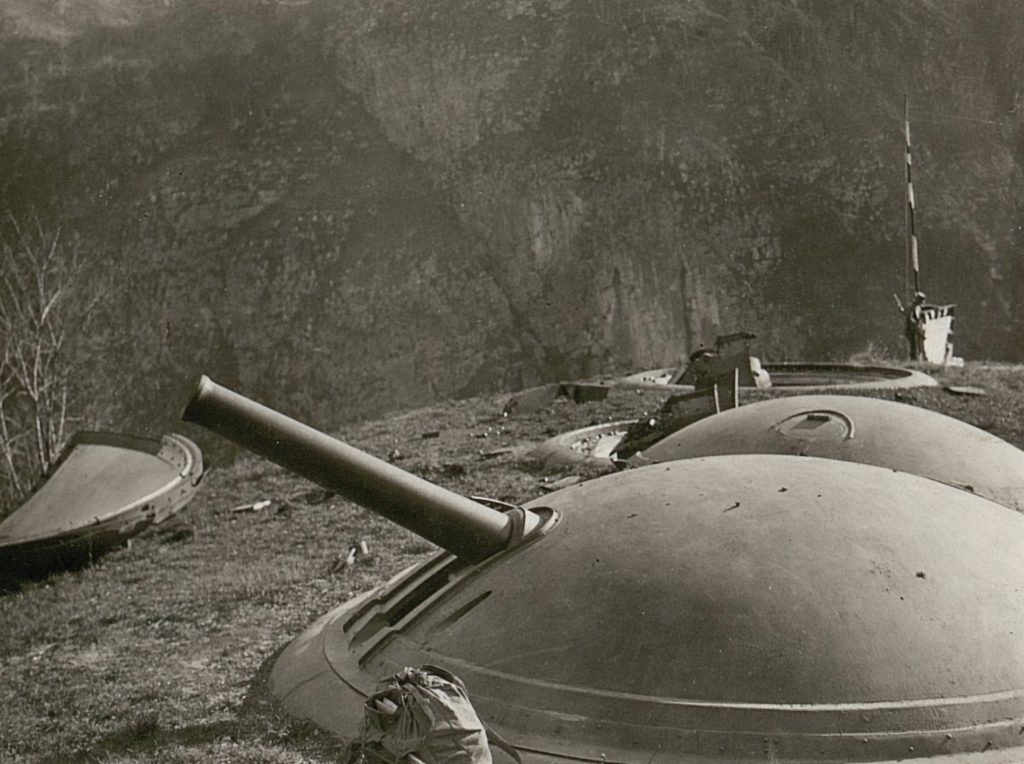
The 411 coastal battery was constructed by the Soviets in 1935 to defend the strategic port city and marine base of Odessa. During the siege, which was carried out mostly by Fascist Romanian troops alongside Germans, the battery rained down an incredible 200,000 shells on the invaders. When it became clear that the city was lost, Soviet Rear Admiral Gavriil Zhukov ordered the battery to be destroyed to prevent it from falling into enemy hands.
Today, the area is full of rare WW2 vehicles including an enormous Soviet submarine, a homemade Soviet tank, and even a tram car that still functioned as a commuter route during the siege albeit with an anti-aircraft gun attached to act as a mobile battery whilst it worked. There is also a small Soviet-era museum full of various artifacts on site.
3. Partisan Centre, Spadchansky
Located in the same forests as the destroyed Panzer tank at the beginning of the article, the Partisan center is located in another sector of Spadchansky Forest and is dedicated to the resistance movement that existed in this area during WW2. Flanked by WW2 tanks and artillery guns, inside the center is a wealth of information on the Soviet partisan movement as well as various artifacts used in battle by them.
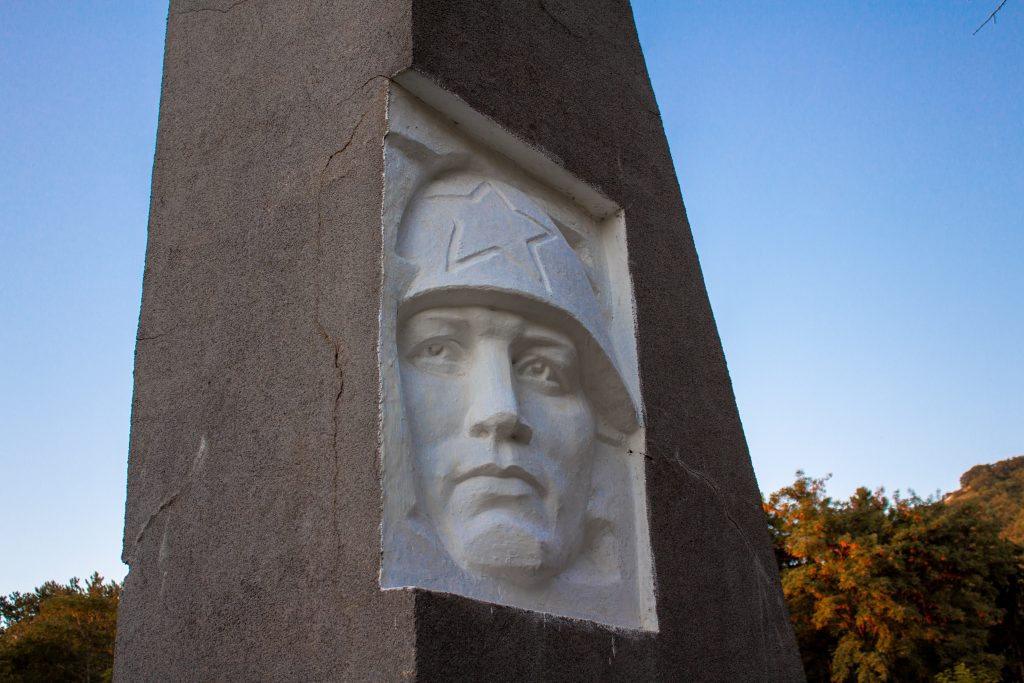
Located closer to Russia than to the Ukrainian capital of Kyiv, the former partisan stronghold is not far from Kursk where the infamous WW2 tank battle took place. Aside from the main museum jam-packed with artifacts from the Second World War, the surrounding area is also full of Soviet monuments as well as surviving bunkers and dugouts used by both the Nazis and the partisans.
Since the revolution in 2014, various Soviet-era monuments are being quickly destroyed across Ukraine. The history of the Soviet Union in Ukraine was far from pleasant, but the blatant physical destruction of history is never acceptable. Thankfully, the Partisan center boasts an alley of surviving Lenin statues rescued from ruin across Ukraine.
2. WW2 Sights Along The Stalin Line
Construction on the Stalin Line was started in the 1920s with the aim of protecting the western borders of the Soviet Union from any possible attacks from the west. It consisted of a huge amount of concrete bunkers, minefields, barbed wire, and gun emplacements. It had some similarities to the French Maginot Line, although less elaborate.
After the Molotov-Ribbentrop pact and the subsequent short-lived friendship with Nazi Germany, the USSR expanded its territory and focused on constructing a new defense called the Molotov Line on the Soviet empire’s new borders, leaving the Stalin Line to become neglected and many of its weapons to be moved elsewhere.
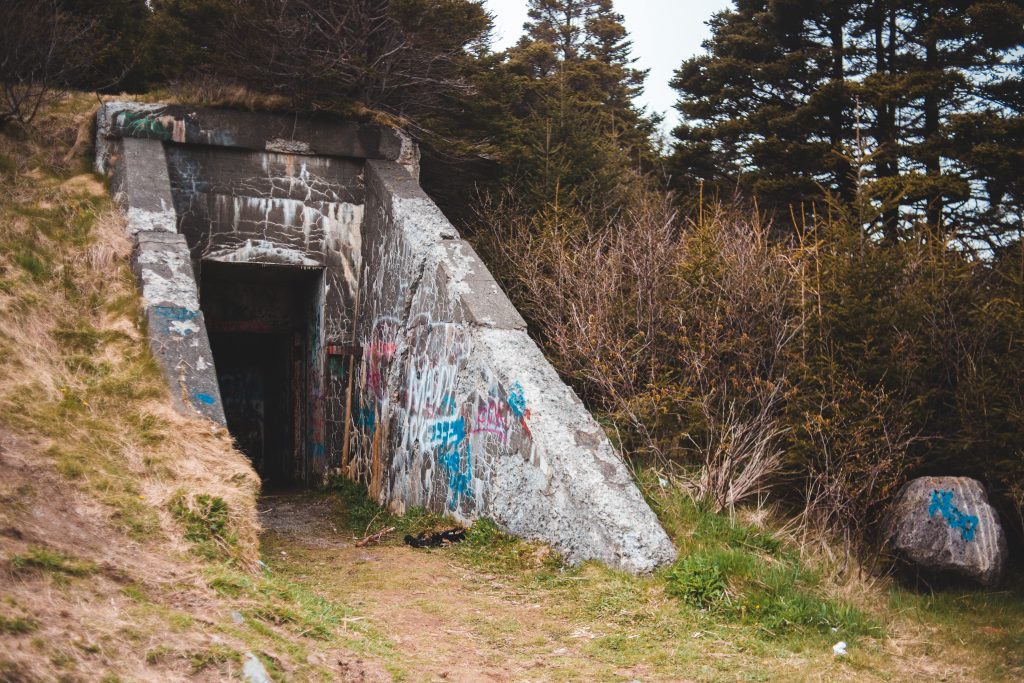
When 4 million men stormed the Soviet borders in Operation Barbarossa, the Stalin Line was undermanned and ill-prepared against the Nazi onslaught. Despite this, the Soviets held out as long as they could in a futile fight against an overwhelming enemy. Following WW2, the Stalin Line was abandoned and today its remains can be found spread out across Ukraine as well as Moldova, Belarus, and Russia.
Many of the bunkers had notably dark stories, including one which was situated in the middle of a lake and left behind as the Germans advanced, with Soviet soldiers left entombed inside. The Germans returned a few weeks later to find the emaciated crew clinging to survival having run out of supplies. The Germans promptly burned them alive with a flamethrower. One of the countless stories of horror from Operation Barbarossa, that we know of.
1. WW2 Sights at the Museum of the Great Patriotic War, Kyiv
When arriving in Ukraine, the odds are you will be flying into the capital of Kyiv. Upon entering the city, you’ll likely see an incredible shimmering Soviet monument overlooking the city. This is the iconic Rodina Mat (mother of the motherland) and it marks the site of Ukraine’s national museum of the great patriotic war which is the Soviet-era term for WW2.
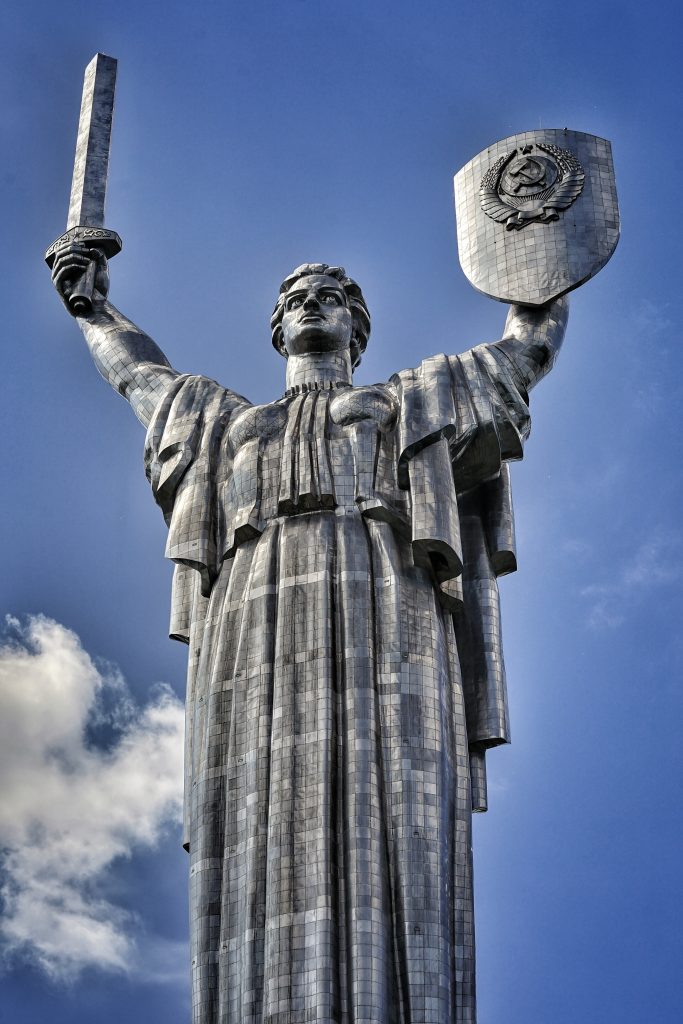
Almost in a protective formation around the museum itself is a mass of WW2 weapons, tanks, and planes as well as a good selection of Cold War armaments. Inside is a vast plethora of Second World War artifacts from the Red Army and Nazi occupiers, including a solid bronze eagle from Berlin, as well as captured German trophies laid out on a bed of captured Iron Crosses.
One of the most poignant WW2 sights and displays at the museum is an incredibly long dinner table that stretches around 100ft. Each chair has an empty glass of vodka laid out for a soldier that would never return in Ukrainian tradition.
Alongside its mass of WW2 sights, the upper floors are home to a unique exhibit on the country’s current civil war, featuring Mad Max-style homemade fighting vehicles and bullet-riddled objects from the battle for Donetsk Airport.
To visit the places on our list of epic WW2 sights in Ukraine, check out our page dedicated to private tours of Ukraine and simply contact our team to arrange your dream trip.



